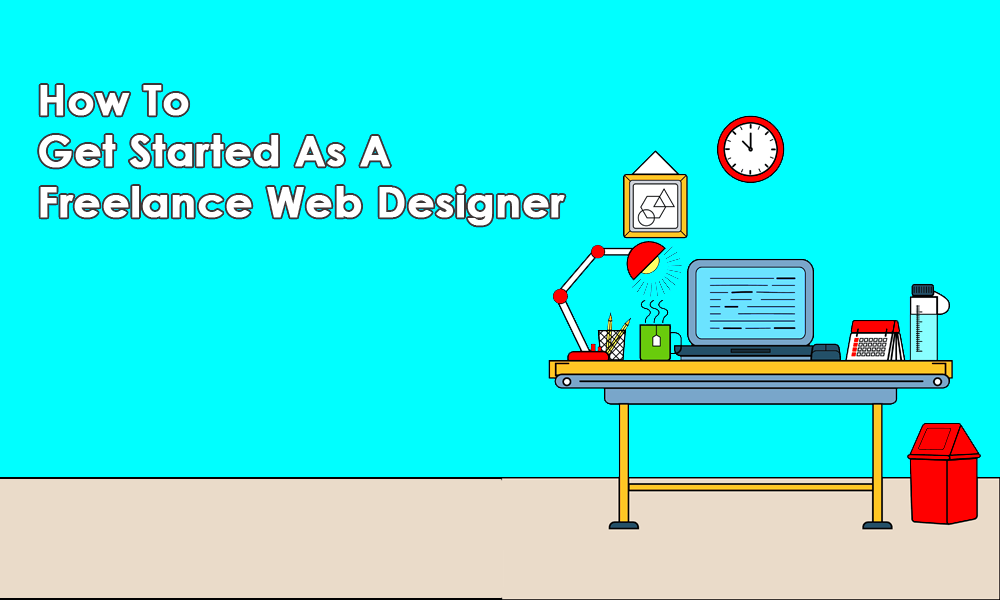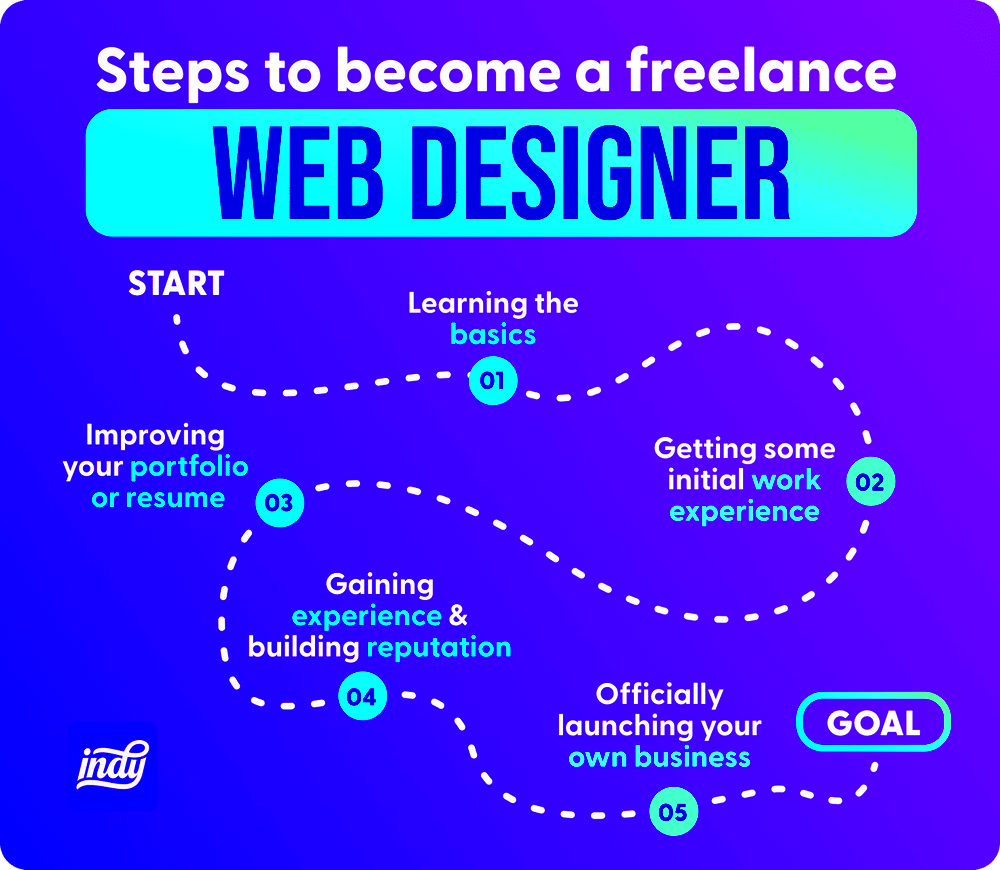Freelance web design is a great career choice for those who enjoy creativity and problem-solving. It allows you to work with various clients, from small businesses to large enterprises, creating websites that help them reach their goals. As a freelance web designer, you have the freedom to set your own schedule and work from anywhere, which is a big plus for many. The demand for responsive websites is growing, as more people access the web from smartphones and tablets. If you're passionate about design and technology, freelancing in web design might be the perfect path for you.
What Skills Are Required for Responsive Web Design?

Responsive web design requires a mix of technical skills and creative flair. Here are some of the essential skills you need:
- HTML and CSS – These are the building blocks of any website. HTML structures the content, while CSS is used to style it.
- JavaScript – This helps you create interactive elements on a webpage, like buttons or forms that respond to user actions.
- Responsive Design Principles – This involves designing websites that automatically adjust to fit different screen sizes, such as smartphones, tablets, and desktops.
- Adobe Photoshop and Sketch – These tools are used for designing mockups and wireframes before the development stage.
- UX/UI Design – Understanding how users interact with websites is crucial for designing sites that are both beautiful and functional.
- SEO Basics – Knowing how to make your websites search engine friendly can help improve visibility and drive traffic.
Also Read This: How to Write a Buyer Request in Fiverr
How to Get Started as a Freelance Web Designer

Getting started as a freelance web designer might seem daunting, but with the right approach, you can begin building a successful career. Here are the steps to guide you:
- Learn the Necessary Skills – Before offering your services, make sure you're comfortable with the core skills mentioned earlier. Take online courses, practice, and create small projects to improve your proficiency.
- Create a Portfolio – Your portfolio is your resume. Start by building your own website and including examples of your work. Even if you don’t have client projects, create personal projects to showcase your abilities.
- Set Your Rates – Research what other freelance web designers charge. Pricing can vary depending on experience, location, and the complexity of the project. Starting with competitive but reasonable rates can help you land your first clients.
- Network and Market Yourself – Use social media, freelance platforms like Fiverr, and networking events to connect with potential clients. Word-of-mouth is also powerful in the freelance world, so ask satisfied clients for referrals.
- Stay Organized – As a freelancer, managing your time and projects is crucial. Use tools like Trello or Asana to keep track of deadlines and tasks.
Also Read This: How to Properly Market 3D Printing on Fiverr
Building a Strong Portfolio for Web Design

Your portfolio is one of the most important tools you have as a freelance web designer. It showcases your skills, creativity, and ability to meet client needs. A strong portfolio can help you stand out from the competition and attract new clients. Here’s how to build a portfolio that speaks for itself:
- Showcase Your Best Work – Choose 5 to 10 of your best projects to feature. Focus on quality over quantity, and make sure each project highlights a different skill or aspect of web design, such as mobile responsiveness or e-commerce.
- Provide Detailed Case Studies – Instead of just showing a screenshot of the finished project, explain the challenges you faced, how you solved them, and the results of your design. This gives potential clients an insight into your problem-solving and process.
- Include a Variety of Projects – If you can, show a diverse range of projects. This could include business websites, personal blogs, or even non-profit sites. A variety will demonstrate your versatility and ability to meet different needs.
- Make Your Portfolio Easy to Navigate – Your portfolio should be simple to navigate and mobile-friendly. Make sure your contact details are easy to find and that the design reflects your skills as a web designer.
- Update Regularly – As you gain more experience and complete new projects, update your portfolio. This ensures that it always reflects your current skill level and the types of projects you want to attract.
Also Read This: Choosing the Right Graphic File for Fiverr: A Comprehensive Guide
Finding Clients as a Freelance Web Designer
Finding clients is one of the biggest challenges for freelancers, but with the right approach, you can build a steady stream of work. Here are some proven strategies to help you find clients:
- Use Freelance Platforms – Websites like Fiverr, Upwork, and Freelancer are great for finding clients. These platforms connect freelancers with businesses looking for design services, and they provide a way to build your reputation through reviews and ratings.
- Network in Your Community – Attend local meetups, business events, and industry conferences. Networking face-to-face can help you build strong relationships and land clients who trust you with their design projects.
- Leverage Social Media – Social media platforms like LinkedIn, Instagram, and Twitter can be powerful tools for attracting clients. Share your work, offer design tips, and engage with potential clients through these platforms to build your online presence.
- Ask for Referrals – Satisfied clients are often willing to refer you to others. Don’t hesitate to ask for referrals after completing a project. Word-of-mouth recommendations can be one of the best ways to find new clients.
- Offer Freebies or Discounts – When you’re just starting, offering free consultations or discounted services can help you build your client base. It’s a great way to gain experience while also attracting clients who may later return for paid projects.
Also Read This: A Complete Guide to Becoming a Full-Time Freelancer
Pricing Your Web Design Services
One of the most common questions new freelance web designers ask is, “How much should I charge?” Setting your rates can be tricky, but it’s an important part of building a sustainable business. Here are some tips for pricing your services:
- Understand Your Value – Before setting your rates, consider the value you bring to clients. If you’re solving a problem or helping them grow their business, your services are worth more than just the time you spend on a project.
- Research Industry Rates – Check what other web designers are charging in your area or on freelance platforms. This can give you an idea of the going rates for web design services, whether it’s by the hour or per project.
- Hourly vs. Project-Based Pricing – Decide whether you want to charge hourly or per project. Hourly rates are good for smaller tasks or ongoing work, while project-based pricing is often better for larger, more complex designs. Consider the pros and cons of each model:
Hourly Pricing Project-Based Pricing Best for ongoing or unclear projects Better for defined, one-time projects Can be unpredictable Provides clear expectations for both parties Easy to track time Fixed rate, no surprises for the client - Consider Your Experience and Expertise – If you're just starting, you might charge lower rates to attract clients and gain experience. As you build your portfolio and reputation, you can gradually raise your rates to reflect your growing expertise.
- Offer Package Deals – To make pricing more attractive, consider offering packages that bundle your services together. For example, you could offer a basic web design package, a premium package with added features like SEO, or a full-service package that includes both design and maintenance.
Also Read This: How to Unpause a Gig on Fiverr
Tips for Maintaining a Successful Freelance Career
Building a successful freelance career takes more than just landing a few clients. It’s about maintaining steady work, growing your reputation, and staying organized. Here are some tips to help you stay on track:
- Stay Organized – Use tools like Trello, Asana, or Google Calendar to manage your projects and deadlines. Keeping track of tasks and progress will help prevent confusion and missed deadlines.
- Keep Learning – The web design industry is constantly evolving. Stay up to date with the latest trends, tools, and technologies. Consider taking online courses or attending webinars to expand your skillset.
- Build Strong Relationships with Clients – Great communication is key to successful projects. Keep clients informed throughout the design process and ask for feedback. Building trust will lead to repeat business and referrals.
- Set Realistic Goals – Setting clear, achievable goals can help you stay focused. Whether it’s increasing your client base, learning a new skill, or raising your rates, setting goals will keep you motivated.
- Manage Your Finances – As a freelancer, your income may not be consistent. Make sure you set aside money for taxes, savings, and emergency funds. Use accounting software like QuickBooks to keep track of your earnings and expenses.
- Balance Work and Life – Freelancing offers flexibility, but it’s important to maintain a healthy work-life balance. Set boundaries for work hours, take regular breaks, and make time for personal activities to avoid burnout.
Also Read This: How to Reactivate a Fiverr Account
FAQ: Common Questions About Freelance Web Design
Starting a freelance web design career can raise a lot of questions. Here are some answers to the most common ones:
- How do I get my first client? – Start by offering your services to friends, family, or local businesses. You can also use freelance platforms like Fiverr and Upwork to find your first job.
- What should I charge as a beginner? – As a beginner, you may want to charge lower rates to build a portfolio. However, don’t undersell yourself. Research industry rates to ensure you’re pricing your services competitively.
- Do I need a degree to be a freelance web designer? – No, you don’t need a degree. Many successful freelancers are self-taught. The most important thing is your skill and ability to deliver quality work.
- How do I stay motivated when working alone? – Set clear goals, stick to a schedule, and join online communities to stay connected with others in the industry. Networking and having a support system can help you stay motivated.
- How do I handle difficult clients? – Maintain professionalism and clear communication. If a client is unhappy, try to address their concerns calmly. Setting expectations early on and having a contract in place can help avoid misunderstandings.
Conclusion: Starting Your Freelance Web Design Career
Starting your freelance web design career may seem challenging at first, but with the right mindset and approach, you can build a rewarding and flexible career. By continually improving your skills, creating a strong portfolio, networking effectively, and managing your business well, you can set yourself up for long-term success. Remember, every successful freelancer starts somewhere—take small steps, learn as you go, and keep pushing forward. The freelance web design world is full of opportunities, and with dedication, you can create a career that fits your lifestyle and goals.




